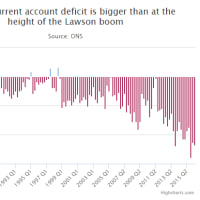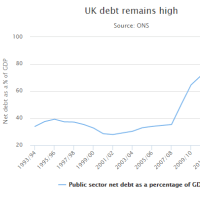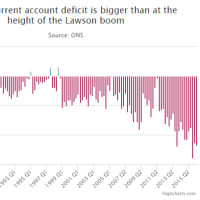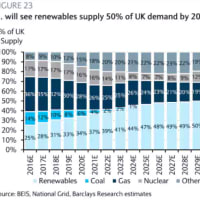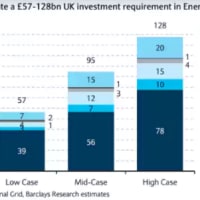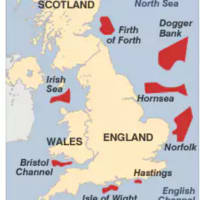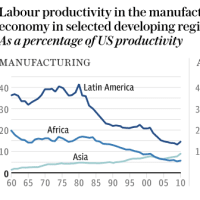つづき
Perhaps Asians were shocked to learn that German, French and Dutch banks had gorged on sub-prime debt, or perhaps they began to take a closer look at Europe's fertility rate and vanishing youth, or woke up to the deflating property bubble in Spain. Yes, the euro reached record highs in the autumn, but this was driven by hot money flows. Such fickle finance will drain away as soon as the ECB hints at rate cuts.
恐らくアジア勢は、ドイツ、フランス、オランダの銀行がサブプライムにどっぷり浸かっていた、と知って衝撃を受けただろう。
さもなければ、ヨーロッパの出生率や若者の減少を詳しく観察し始めたのかもしれない。
または、スペインで不動産バブルが弾け跳んだので目が醒めたのかもしれない。
そう、ユーロは秋に最高値をつけたが、これはホット・マネーの流入のせいだったのだ。
このような気まぐれな資金は、ECBが金利引き下げをほのめかすや否や、ごっそりと逃げ出すだろう。
So are the new powers turning to gold instead, mistrusting the euro as much as the dollar? Their footprints have not yet shown up in the IMF reserve data, but there can be long delays, and China does not report data. Vladimir Putin has told Russia's central bank to raise the gold share of its $469bn reserves to 10 per cent. We know that those Asian and oil states now holding most of the world's $6.6 trillion reserves possess very little gold, yet most have an historical affinity for it. Draw your own conclusion. We know too that the little guys are buying defiantly, at last able to invest in gold through exchange trade funds (ETFs) on the main bourses. The ETF holdings have reached 834 tonnes, putting them in seventh place ahead of the Bank of England, the ECB and Japan.
では、新興勢力はドルと同じくらいにユーロに疑念を抱いて、代わりに金に目を向けているのだろうか?
IMFの積立データにその足跡は未だ表れていないが、かなりの遅れはあるだろうし、そもそも中国はデータを報告しない。
ウラジミール・プーチンは、ロシアの中央銀行は準備金$4,690億の金の割合を10%にまで引き上げる、と語った。
現在、世界の準備金$6.6兆の殆どを握るアジアや産油国は金を非常に僅かしか保有していないものの、その殆どが歴史的にも金を好むことを我々は知っている。
各自結論を下すが良い。
主要株式市場でEFTを通じてやっと金に投資出来るようになった、一般人が挑戦的に買い捲っていることも、我々は知っている。
EFTの保有量は834トンに達しており、BoE、ECB、そして日本を追い越す第7位につけた。
Gold's latest surge has caught the bullion banks off-guard. Most expected the price to fall back at the end of India's Diwali marriage festival. Speculative "longs" on New York's Comex market exceed levels that have often led to a sharp sell-off in the past. Jewellery demand - still 80 per cent of the market - has stalled. With all the moons aligned for a correction, Goldman Sachs advised clients to go "short" in November. That was $60 ago. Ouch.
この金価格の急騰は、金銀行に不意打ちを喰らわせた。
インドのディーワーリー祭が終われば、価格もまた下がるだろう、と殆どは予測していた。
ニューヨークのCOMEX市場での投機的「ロング」は、これまでは激しい売りにつながることが多かった水準を上回った。
宝飾品用需要(未だ市場の80%)は変わらずだ。
全てが調整の兆しを見せる中、11月、ゴールドマン・サックスはクライアントに「ショート」で行くようアドバイスした。
あの時は$60だった。
残念。
The gold bears may yet smile. James Steel, an analyst at HSBC, said gold is shackled to oil since the commodity funds ($140bn) allocate fixed shares to each component.
それでも金のベア派は未だ笑えるかもしれない。
HSBCのアナリスト、ジェームス・スティールは、商品ファンド($1,400億)はそれぞれへの投資比率を固定しているので、金は石油に縛り付けられているのだと語った。
Energy makes up 65 per cent of the weighting, so the indexes must buy gold whenever oil shoots up - as it did last week, kissing $100 a barrel. "The oil gold correlation has risen 0.9 since the emergence of these funds, which is very high," he said.
エネルギーは全体の65%を占めるので、指数は石油が高騰すれば必ず金を買わなければならない…そう、バレル$100に到達した先週のように。
「この手のファンドが登場して以来、石油と金の相関関係は0.9に上昇した。非常に高い水準だね」
と彼は言った。
So what happens if a slump chills oil? We will then learn whether gold is a commodity, or once again a currency.
では、不景気で石油価格が冷え込んだらどうなる?
その時には、金が商品なのか、はたまた再び通貨になったのか、知ることになるだろう。
"We think gold is fundamentally overvalued by about $150 but that can go on for a long time," John Reade, the precious metals chief at UBS and top forecaster this year. "A lot of our clients have been buying gold since the credit crunch because they think central banks will respond with aggressive monetary easing. If that becomes a mainstream view, gold will soon have four figures on it. The feeling is that there is a lot of money around, and not much gold," he said.
「金は根本的に$150ほど余計な値段が付いていると思っているけど、結構な間はこのままだろうね」
とUBSの貴金属部門長で今年のトップ予想師のジョン・リードが言った。
「我々のクライアントの多くは、クレジット・クランチ以来金を買っているよ。中央銀行が激しい金融緩和で応酬すると思っているからね。その見方が主流になれば、金は直ぐ4桁に乗るだろう。感覚的には、紙幣は沢山出回っているけど金はあんまり、という感じ」。
Indeed. Mining bosses complain that the earth's crust is yielding less gold. Output in South Africa has fallen to the lowest since 1932. Canada has passed peak output. Gregory Wilkins, head of Barrick Gold, says: "Global mine supply is going to decrease at a much faster rate than people generally believe."
その通り。
鉱山企業のボス達は、金の産出量が少ないと言ってぼやいている。
南アフリカでの産出量は、1932年以来最低に落ち込んでいる。
カナダもピークを過ぎてしまった。
バリック・ゴールドのグレゴリー・ウィルキンス代表はこう語る。
「金の生産量は皆が思っているよりも遥かに早く落ち込んでいる」。
In the Middle Ages gold fetched nearly $3,000 an ounce in real terms. The price fell to nearer $550 when Spain flooded the world with Aztec and Inca riches, and there it hovered for three centuries.
中世、現在の価格にして金はオンス$3,000近かった。
スペインがアステカ帝国とインカ帝国の富を世界中にばら撒いて、その価格は$550近くまで下がり、その後3世紀に亘ってその水準に停滞してきた。
But the modern era has been an aberration. Supply is exhausted. Perhaps we should now regard the Middle Ages as the proper benchmark price. One thing is certain: gold will outperform paper as long as governments keep increasing the global money supply 15 per cent a year.
しかし現代は異常だ。
供給は枯渇した。
恐らく、もう中世のそれを適正基準価格と考えるべきかも知れない。
確実なのは、各国政府が世界的なマネー・サプライを毎年15%ずつ増やし続ける限り、金は紙幣をしのぐだろう、ということだ。
 | KGBの世界都市ガイド晶文社このアイテムの詳細を見る |










